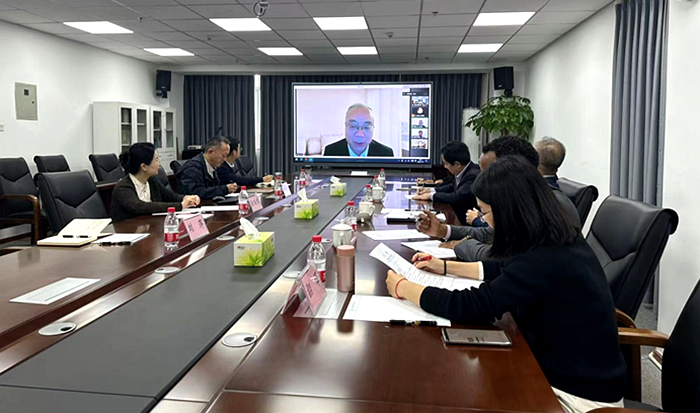Identification of a new molecular mechanism of root-knot nematode effector proteins
Recently, researchers from Institute of Vegetables and Flowers (IVF) of Chinese Academy of Agricultural Sciences (CAAS), in collaboration with Institut Sophia Agrobiotech, French National Research Institute for Agriculture, Food and Environment reported their research results in a paper entitled “The root-knot nematode effector Mi2G02 hijacks a host plant trihelix transcription factor to promote nematode parasitism” published in the journal Plant Communications .
Plant-parasitic nematodes cause great agricultural losses every year. Root-knot nematodes (RKNs) and cyst nematodes are harmful and economically important crop pathogens. RKNs can infect almost all cultivated plants, especially some vegetable crops such as tomato, cucumber and pepper. With the global climate change, the domestic planting system reform and the rapid development of agricultural mechanization, large-scale and high-value agriculture, the RKNs disease of vegetables has a serious tendency. During the parasitic stages, a large number of effector proteins are secreted into host plant cells by esophagus glands and epidermis, which can degrade plant cell wall, regulate plant immune response, interfere with hormone synthesis and signal transduction, regulate the gene expression and cell development. By analyzing the functions of the key effector proteins and host target proteins during RKNs parasitism will provided theoretical basis for finding new targets for controlling RKNs and developing RNA biopesticides.
Researchers showed that host-induced gene silencing and transgenic method were used to demonstrate that the Mi2G02 effector protein of the Meloidogyne incognita was involved in the regulation of root length and the development of nematode feeding cells. Yeast two-hybrid, bimolecular fluorescence complementation, luciferase complementation assay, and co-immunoprecipitation experiments confirmed that Mi2G02 interacted with plant trihelix transcription factor GT-3a in the nucleus, and the nuclear localization signal of Mi2G02, ShKT domain and DNA-binding domain of GT-3a were the key regions for interaction. GT-3a played an important role in plant root development, especially lateral root development, and was also a key plant target for successful RKNs parasitism. GT-3a had transcriptional inhibition function and could specifically bind the promoter sequence of TOZ and RAD23 and suppressed their expression. Further studies showed that Mi2G02 stabilized GT-3a by inhibiting 26S proteasome-mediated protein degradation, and increased the inhibitory effect on TOZ and RAD23 gene expression. In summary, this study reported the molecular mechanism by which Mi2G02, a key effector of nematode parasitism, interacted with the host transcription factor GT-3a, inhibited its degradation and regulates the expression of downstream target genes, thereby promoting nematode to establish a parasitic relationship with its host.

Figure 1. Model of interaction between Mi2G02 effector protein and host GT-3a to promote nematode parasitism
The research was supported by the Youth Innovation Program of the Chinese Academy of Agricultural Sciences, the National Natural Science Foundation of China, the Beijing Natural Science Foundation, the Innovation Project of the Chinese Academy of Agricultural Sciences.
More information can be found through the link: https://doi.org/10.1016/j.xplc.2023.100723
By Jianlong Zhao (zhaojianlong@www.comparadata.com)
-
 Dec 15, 20232023 International Cooperation Work Conference of CAAS Held in Beijing
Dec 15, 20232023 International Cooperation Work Conference of CAAS Held in Beijing -
 Dec 12, 2023Symposium Marking the 10th Anniversary of TYSP held at CAAS
Dec 12, 2023Symposium Marking the 10th Anniversary of TYSP held at CAAS -
 Dec 12, 2023Vice Prime Minister of Malaysia Visited CAAS
Dec 12, 2023Vice Prime Minister of Malaysia Visited CAAS -
 Dec 08, 2023South-South and Triangular Cooperation Division (PST), Food and Agriculture Organization (FAO) Visited Biogas Institute of Ministry of Agriculture and Rural Affairs (BIOMA)
Dec 08, 2023South-South and Triangular Cooperation Division (PST), Food and Agriculture Organization (FAO) Visited Biogas Institute of Ministry of Agriculture and Rural Affairs (BIOMA) -
 Dec 06, 2023Global Tea Research Leaders Forge Paths of International Cooperation Held in Hangzhou
Dec 06, 2023Global Tea Research Leaders Forge Paths of International Cooperation Held in Hangzhou
